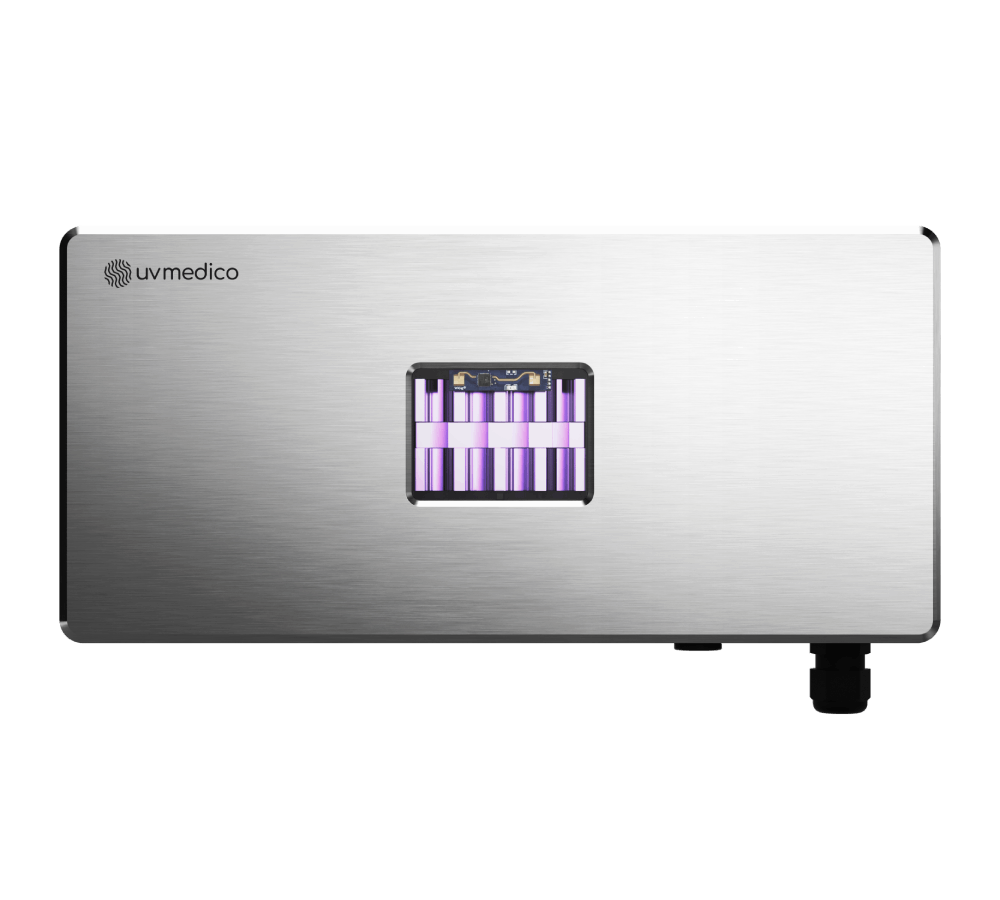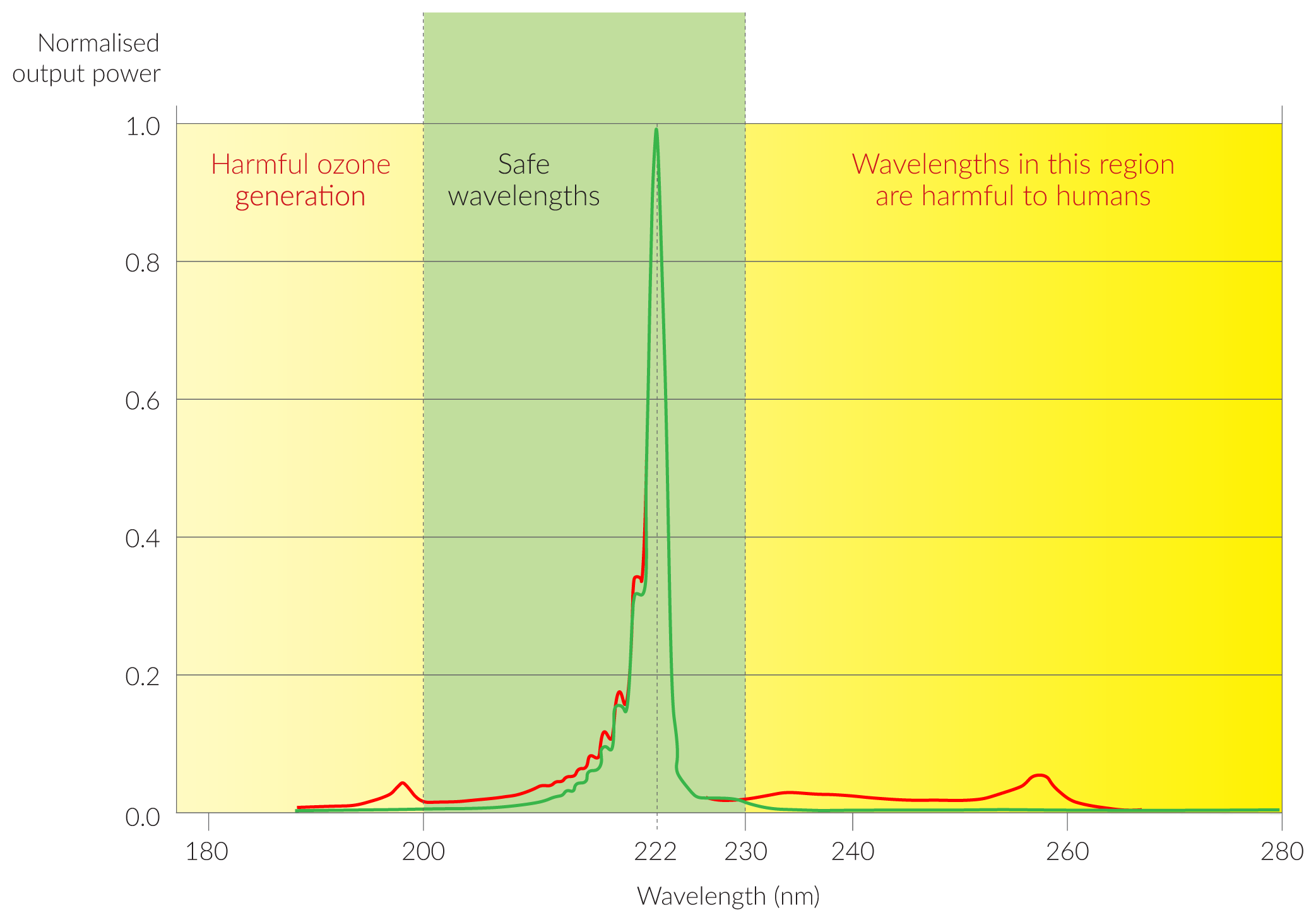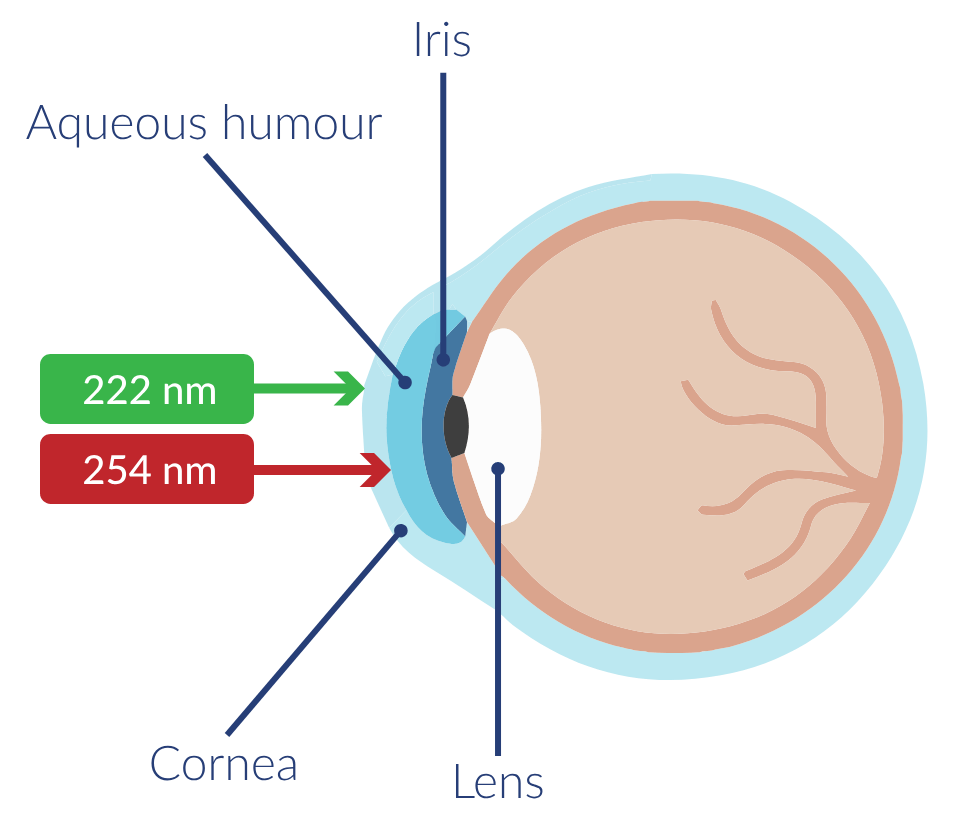The Technology behind UV222
The next step in UVC light decontamination has finally arrived
Sign up for our newsletter
Decades of UV light decontamination
UV light has been used for over a century to decontaminate environments by inactivating viruses and bacteria. However, most UV light is also harmful to human tissue, which means people cannot be present in the room when the light is on.
Luckily, this has all changed with UV222.

Shining a New Light on Health: UV Medico's Excimer Lamp Innovation
Empowering Everyday Spaces with Safe, Efficient Virus Deactivation
UV Medico's Excimer lamp innovation brings unparalleled virus deactivation to everyday spaces, merging safety with efficiency in a compact, user-friendly design, revolutionizing preventive health measures
Putting an end to secondary emissions
UV Medico’s Far-UVC lamp consists of a tube filled with krypton chloride gas. This gas has the unique property of emitting UVC-light at 222 nm when a discharge is applied to it. When the lamp is turned on, electricity creates a discharge that excites the gas and after a short period, UV-C light at 222 nm is emitted.
A Far-UVC lamp without a filter emits light in a narrow band around a 222 nm peak, but also releases secondary emissions around 235 nm and 250 nm. These extra wavelengths are known as side-bands or side-emissions. These wavelengths harm humans, but the unique and patented safety filter in UV222 blocks them before they are emitted into the surrounding environment.
The safety filter technology in the lamp from UV Medico is a thin filter that only lets through light at around 222 nm and blocks all other unwanted radiation. It works much in the same way as sunglasses with UV protection, blocking the UV radiation from passing through and entering the environment, making the light from UV222 suitable for use in occupied spaces.
Harmful to pathogens, safe to use in occupied spaces
UV Medico’s Far-UVC lamp consists of a tube filled with krypton chloride gas. This gas has the unique property of emitting UVC-light at 222 nm when a discharge is applied to it. When the lamp is turned on, electricity creates a discharge that excites the gas and after a short period, UVC light at 222 nm is emitted.
A Far-UVC lamp without a filter emits light in a narrow band around a 222 nm peak, but also releases secondary emissions around 235 nm and 250 nm. These extra wavelengths are known as side-bands or side-emissions. These wavelengths harm humans, but the unique and patented safety filter in UV222 blocks them before they are emitted into the surrounding environment.
The safety filter technology in the lamp from UV Medico is a thin filter that only lets through light at around 222 nm and blocks all other unwanted radiation. It works much in the same way as sunglasses with UV protection, blocking the UV radiation from passing through and entering the environment, making the light from UV222 suitable for use in occupied spaces.
A New Standard in Disinfection
UVC light, particularly at the 222 nm wavelength, is redefining decontamination practices across industries
Human Safety
UVC light at 222 nm offers a disinfection solution that's safe for humans when applied in correct doses within regulatory limits, allowing for continuous operation in occupied spaces
Disinfection Performance
Leveraging peak absorption wavelengths, UVC light effectively disrupts microbial DNA, ensuring thorough decontamination and reduced transmission risks
Industry Integration
From hospitals to hospitality, UVC light is integrating seamlessly into various sectors, providing a sustainable and effective defence against pathogens
Learn More about the Science
Do you wish to learn more about the science behind UV222, you can read the posts below, or visit our "Research and Publications" page here.

 UV222™
UV222™ UV222 Linear
UV222 Linear UV222 Downlight
UV222 Downlight Vertex 222
Vertex 222.png) UV222 Pendant
UV222 Pendant.png) UV222 Booth
UV222 Booth.png) UV222 Step-On
UV222 Step-On.png) UV222 Cleanroom Downlight
UV222 Cleanroom Downlight UV222 Material Airlock
UV222 Material Airlock UV222 Ambulance
UV222 Ambulance UV222 Industrial
UV222 Industrial.png?width=600&height=600&name=Untitled%20(600%20x%201000%20px).png)

